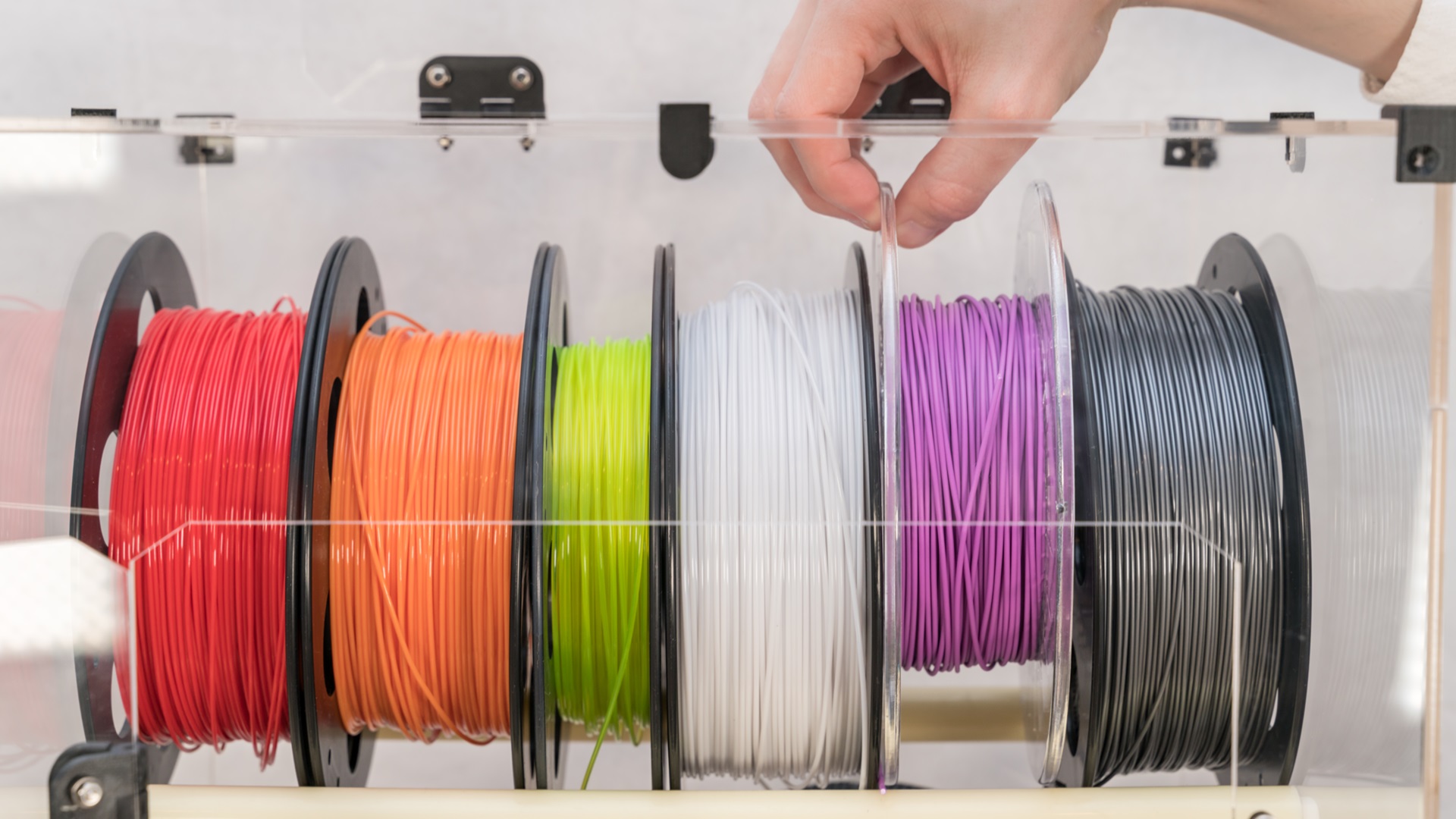Manufacturing process is usually the golden goose in showing off quality parts. However, sometimes the true measure of quality in the additive manufacturing world doesn’t come from the nozzle, but the storage box.
In highly demanding commercial and industrial applications, things seemingly as insignificant as storage can mean the difference between a system that runs smoothly and one that fails. Today, we’re discussing the storage of AM materials in-depth with a crash course on why it is as important, if not more, than process.
The Magic Is In the Filament
Before getting into storage methods, let’s lay out the what and why of filament care. As the primary consumable in 3D printing, filament type, quality, and condition matter. 3D printers can be loaded with a variety of materials, ranging from hygroscopic materials like PLA and Nylon to more resilient options like ABS and PETG. Yet, there’s a measurable difference to be noted between products made from the same material when properly stored versus improperly stored.
A spool of filament kept in optimal conditions will produce consistently high-quality prints with smooth surfaces and strong layer adhesion. Meanwhile, a neglected spool exposed to environmental factors may result in brittle parts with visible defects, even if they came from the same manufacturing batch.
The case for proper storage goes beyond performance. Large-scale manufacturing operations can waste significant resources when using compromised materials. The cost of replacing ruined filament spools, combined with machine downtime and scrapped prints, can quickly escalate into substantial financial losses. Then there’s the reputational risk of distributing products that don’t live up to expectations.
Protecting Filament from Environmental Aggressors
Proper 3D printer filament storage looks different depending on the material at hand. The goal in every case is to protect spools from whatever may cause them to degrade over time.
Here’s a breakdown of common culprits along with examples of materials they affect most severely:
Moisture
Hygroscopic materials like Nylon, PETG, and TPU readily absorb water from the air. This absorption can lead to print quality issues and material degradation.
UV Light
Many polymers break down when exposed to sunlight for extended periods. ABS and PLA are particularly susceptible to UV damage, which can cause brittleness and color fading.
Temperature Fluctuations
Rapid temperature changes can affect the crystalline structure of some materials. PC and PET filaments are especially sensitive to thermal cycling.
Dust and Debris
While less damaging than other factors, particulate contamination can clog nozzles and create surface defects in printed parts.
3D Printing Filament Storage Solutions for Long-Term Material Integrity
Manufacturers have no shortage of options when it comes to 3D printing filament storage. As mentioned in the last section, there’s no single ‘best’ way to keep spools, and likewise plenty of methods contending for the title of ‘worst’. Here is a rundown of the most common and proven methods:
Filament Storage Boxes
Here’s some good news for anyone who doesn’t want to spend more time thinking about 3D printing filament storage than they need to; filament storage boxes are containers specially designed to protect 3D printing materials from environmental factors. They feature airtight seals and dedicated spaces for desiccant packets and many also include hygrometers to monitor humidity levels. While not the most sophisticated solution, this is a reliable and cost-effective choice for small to medium-scale operations.
Dry Cabinets
Big industry projects may warrant more thought and investment in filament storage. Dry cabinets are essentially industrial-grade dehumidifiers with precise environmental controls. Units maintain constant temperature and humidity levels while providing ample storage space for multiple spools. Though the initial investment is higher, the level of protection and convenience that premium buys is invaluable for operations where material consistency is critical.
Vacuum Sealed Bags
Airtight containers can protect and preserve lots of things. In everyday life, people use them for space-efficient suitcase packing, closet organization, and food storage. For 3D printing materials, vacuum-sealed bags offer similar benefits with added protection against moisture and air exposure.
This method is particularly effective for the long-term storage of unused spools and proves especially valuable when storing multiple material types in limited space. Vacuum bags are relatively inexpensive and can be reused multiple times.
The main drawback is the need to reseal bags each time you access materials. Removing and replacing spools also requires more time and effort compared to other storage methods. Hobbyists and small manufacturers might still find this method worthwhile for its balance of effectiveness and affordability.
DIY Solutions
While purpose-built storage options are ideal, there’s nothing saying you can’t achieve professional-grade protection with improvised equipment. Some manufacturers create custom solutions using common materials. Combinations of airtight plastic bins with desiccant packs, modified food storage containers, or even repurposed appliances can serve as adequate storage systems when properly maintained. Dust filters and filament clips have the capacity to further protect materials from degradation during storage and use.
Regardless of the storage solution, certain principles of preserving the integrity of 3D printing material remain universal. Always keep materials sealed when not in use, monitor environmental conditions regularly, and rotate stock to ensure older materials get used first.
If that seems like a lot of work, remember that proper storage is an investment rather than an expense. The cost of implementing robust storage solutions is typically far less than potential losses from material degradation or print failures.
Although not the trendiest topic, small, overlooked things like storage hold the key to success in Industry 4.0 implementations.
Read the original article here.
Automation Alley is a nonprofit technology business association and Digital Transformation Insight Center focused on driving the growth and success of businesses in Michigan and beyond through innovation and automation. With a global outlook and a regional focus, we foster a vibrant community of innovators, entrepreneurs, and business leaders through opportunities for collaboration and learning. Our programs and services help businesses develop the skills and expertise needed to effectively jumpstart or accelerate digital transformation. By bringing together industry, academia, and government, we aim to create a dynamic ecosystem that drives innovation and growth across Michigan.




